DURACO – Rain Water Tank – 450L Column Type
Out of stock
₨ 7,700.00
DURACO – Rain Water Tank – 450L Column Type. Price includes delivery on ground level, not installation services.
Measurement- Capacity: 450L, Diameter: 630mm, Height: 1600mm
Out of stock
Normal
0
false
false
false
EN-US
X-NONE
X-NONE
<img src="data:image/gif;base64,R0lGODlhAQABAIAAAAAAAP///yH5BAEAAAAALAAAAAABAAEAAAIBRAA7" data-wp-preserve="%3Cstyle%3E%0A%20%2F*%20Style%20Definitions%20*%2F%3Cbr%20%2F%3E%0A%20table.MsoNormalTable%3Cbr%20%2F%3E%0A%09%7Bmso-style-name%3A%22Table%20Normal%22%3B%3Cbr%20%2F%3E%0A%09mso-tstyle-rowband-size%3A0%3B%3Cbr%20%2F%3E%0A%09mso-tstyle-colband-size%3A0%3B%3Cbr%20%2F%3E%0A%09mso-style-noshow%3Ayes%3B%3Cbr%20%2F%3E%0A%09mso-style-priority%3A99%3B%3Cbr%20%2F%3E%0A%09mso-style-parent%3A%22%22%3B%3Cbr%20%2F%3E%0A%09mso-padding-alt%3A0in%205.4pt%200in%205.4pt%3B%3Cbr%20%2F%3E%0A%09mso-para-margin-top%3A0in%3B%3Cbr%20%2F%3E%0A%09mso-para-margin-right%3A0in%3B%3Cbr%20%2F%3E%0A%09mso-para-margin-bottom%3A8.0pt%3B%3Cbr%20%2F%3E%0A%09mso-para-margin-left%3A0in%3B%3Cbr%20%2F%3E%0A%09line-height%3A107%25%3B%3Cbr%20%2F%3E%0A%09mso-pagination%3Awidow-orphan%3B%3Cbr%20%2F%3E%0A%09font-size%3A11.0pt%3B%3Cbr%20%2F%3E%0A%09font-family%3A%22Calibri%22%2Csans-serif%3B%3Cbr%20%2F%3E%0A%09mso-ascii-font-family%3ACalibri%3B%3Cbr%20%2F%3E%0A%09mso-ascii-theme-font%3Aminor-latin%3B%3Cbr%20%2F%3E%0A%09mso-hansi-font-family%3ACalibri%3B%3Cbr%20%2F%3E%0A%09mso-hansi-theme-font%3Aminor-latin%3B%3Cbr%20%2F%3E%0A%09mso-bidi-font-family%3A%22Times%20New%20Roman%22%3B%3Cbr%20%2F%3E%0A%09mso-bidi-theme-font%3Aminor-bidi%3B%7D%3Cbr%20%2F%3E%0A%3C%2Fstyle%3E" data-mce-resize="false" data-mce-placeholder="1" class="mce-object" width="20" height="20" alt="
” title=”
” />
A rainwater tank collects and stores rain water, typically from rooftops via rain gutters. A typical rainwater collection or harvesting tank can yield 2500 litres of water from 25 mm of rain on a 100 m2 roof.
Rainwater tanks are installed to make use of rain water for later use and reduce CWA water use for environmental reasons.
Stored water may be used for watering gardens, agriculture, flushing toilets, washing machines, washing cars, and also for drinking.
If rainwater is used for drinking, it must first be filtered using a Bio UV Filtration system which will remove bacteria, chemicals and most pathogens. While rain water is pure it may become contaminated during collection. Thus, we strongly advise not to use rainwater for drinking when
there is an alternative mains water supply available.
Rain water harvesting is an environmentally sound and responsible practice in today’s context of environmental protection.
Rain water tank main features:
- Manufactured from 100% virgin material
- Moulded in-one-piece design
- Screwed cover
- Can be fixed at ground level and underground
- 12-year guarantee
- Opaque design
- Availability of special custom modifications.
Ex: additional inlet float valve, variable height outlet, level indicators, outlet and overflow curves - Manufactured from Food Grade materials
- UV stabilized
- No taste or odour imparted from polyethylene
- High impact resistance


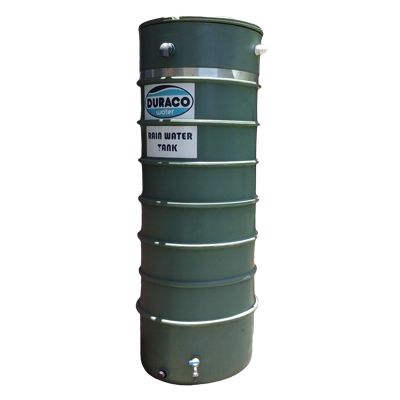
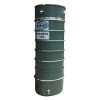
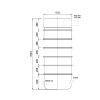


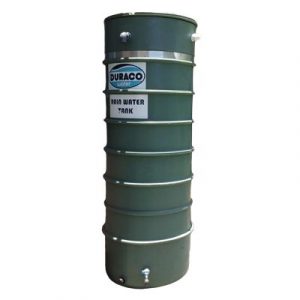
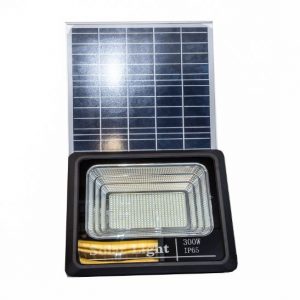
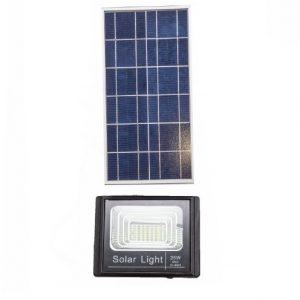


Reviews
There are no reviews yet.